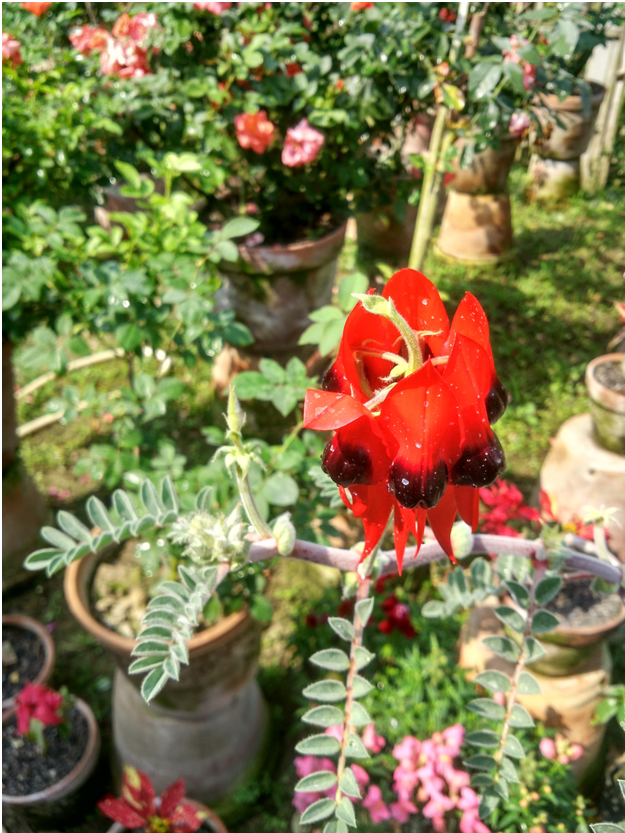Swainsona formosa (Fabaceae) - Desert Pea from Australia
27 Dec 2018Name Meaning: Swainsona formosa Swainsona – named after the English medical doctor and botanist Isaac Swainson (1746-1812). formosa – from the Latin for beautiful.
Sturt’s Desert Pea, Swainsona formosa, is a particularly striking member of the Fabaceae family. Apart from its role as the state flower of South Australia, Sturt’s Desert Pea is highly sought after as a cut flower plant. Having had a long botanical history since its discovery in 1699 by William Dampier, Sturt’s Desert Pea has undergone a number of botanical name changes.
Sturt’s Desert Pea is endemic to the Australian mainland and occurs in arid inland regions with annual rainfall of between 125 and 250mm per year. Its flowering period occurs over a range from July to March, depending to a large extent on the timing of the onset of rain. In its natural habitat, it grows in calcareous, sandy soil in small depressions which channel water before it percolates into the soil.
Although the growth form of Sturt’s Desert Pea can be quite variable, most forms are prostrate, sprawling forms that produce creeping stems up to 2 m long, from which inflorescences arise at regular intervals bearing umbels of 6 to 7 bright red flowers sporting a black shiny boss. Sturt’s Desert Pea occasionally occurs in more shrubby, erect forms which are well-suited to pot culture. A number of naturally occurring colour forms exist. Sturt’s Desert Pea is normally treated as an annual, sprouting readily from seed and completing its life cycle within a year. Cultivation is a lot less tricky if steps are taken to prevent the plants from succumbing to root rot caused by the fungus Fusarium. An open, free draining media of 9 parts composted pine bark to 1 part washed river sand serves as an ideal medium for growing the Sturt’s Desert Pea. Bottom watering is normally preferred, as top watering results in water accumulating near the base of the stem promoting root rot. Despite being a plant originating from an arid, harsh environment, the Sturt’s Desert Pea is a very heavy feeder. A fertilization regime involving regular applications of controlled-release fertilizer allows the plant to grow quickly to maturity and produce large displays of bright red flowers.
The Sturt’s Desert Pea is most commonly propagated through seed, although cuttings and micropropagation are also possible. Seeds need to be scarified before sowing to allow imbibition of water to occur. Cuttings should be dipped into a root hormone powder before being planted into a loose, well draining medium (5 parts perlite : 1 part coir).
Attempts at grafting the Sturt’s Desert Pea have been successful. Grafting plants onto the rootstocks of Clianthus puniceus (Parrot’s Beak) has resulted in increased vigour and lifespan. A grafted Sturt’s Desert Pea is expected to live up to 3 years longer than its natural lifespan of one year. Grafting is normally undertaken at the two cotyledon stage, where the Sturt’s Desert Pea shoot is positioned between the two cotyledons of a C. puniceus after the original shoot has been removed, and then held in place with the use of small plastic clips until the graft is established.
